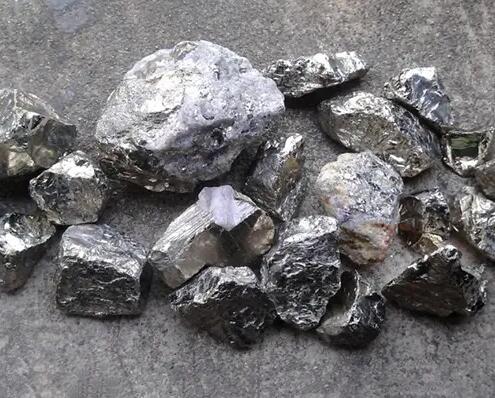News
Tungsten, rare earths in development waste may make up for environmental damage from mining
To achieve the transition to green energy, the world will need large quantities of key minerals such as tungsten, manganese, lithium, cobalt and rare earth elements. However, mining has caused damage to the mining area to a certain extent, and mining the key metals in the mining waste may offset the damage to the mining area.
The extraction of valuable minerals and metals from mining waste has received increasing attention in recent years. While progress has been slow in adopting this approach, it holds great promise.

To achieve net-zero emissions sooner, we will have to mine more critical minerals, including tungsten, lithium, cobalt, rare earth elements, tin, and indium. These metals are essential for making the wind turbines and electric vehicles needed to transition to a low-carbon economy.
New mining opportunities at major lithium deposits in Western Australia, cobalt resources in NSW and tungsten and tin in Tasmania could spell a socio-economic renaissance.
But some environmentalists are skeptical, with the Bob Brown Foundation calling it a "green wash." They noted that increased mining would mean more damage to the environment and generate more waste. Globally, the mining industry generates more than 100 billion tons of solid waste each year. Often these wastes are deposited in tailings dams or waste rock piles, and if not handled properly, there are risks: tailings dams rupture due to geotechnical problems, causing fatal disasters; another problem is acid mine drainage, which contains The highly acidic water of heavy metals escapes the cofferdam.
For example, at the Luossavaara-Kiirunavaara Aktiebolag mine in Sweden, the tailings from iron ore mining are now one of the largest deposits of rare earth elements in Europe. Likewise, the world's annual phosphate production is estimated to contain around 100,000 tonnes of rare earth elements, a significant portion of which ends up in the waste stream. Copper deposits are often the source of many key metals such as antimony and bismuth, as well as cobalt and indium.
Valuable minerals such as gallium, scandium, vanadium and rare earth elements can be found even in coal ash, the deposits left behind after coal is burned. The extraction of minerals from mining waste has attracted increasing attention, with conferences on new areas of re-mining taking place in Europe and new prospecting activities to explore mining waste in Australia. The Queensland government was the first to invest in this secondary prospecting, funding sampling at 16 sites. Early results found cobalt deposits rich enough to attract overseas investment.
NSW recently launched a similar initiative, while Geoscience Australia, the University of Queensland and RMIT University are working to produce Australia's first-ever atlas of mine waste.
Once completed, the Atlas will be a valuable resource for companies keen to position themselves to extract metals such as tungsten, lithium, cobalt, rare earth elements from tailings, such as New Century Resources and Rio Tinto, which has offered a A $2 million investment has been made in the new startup, which uses revenue from mine waste mineral recycling to pay for mine rehabilitation.

